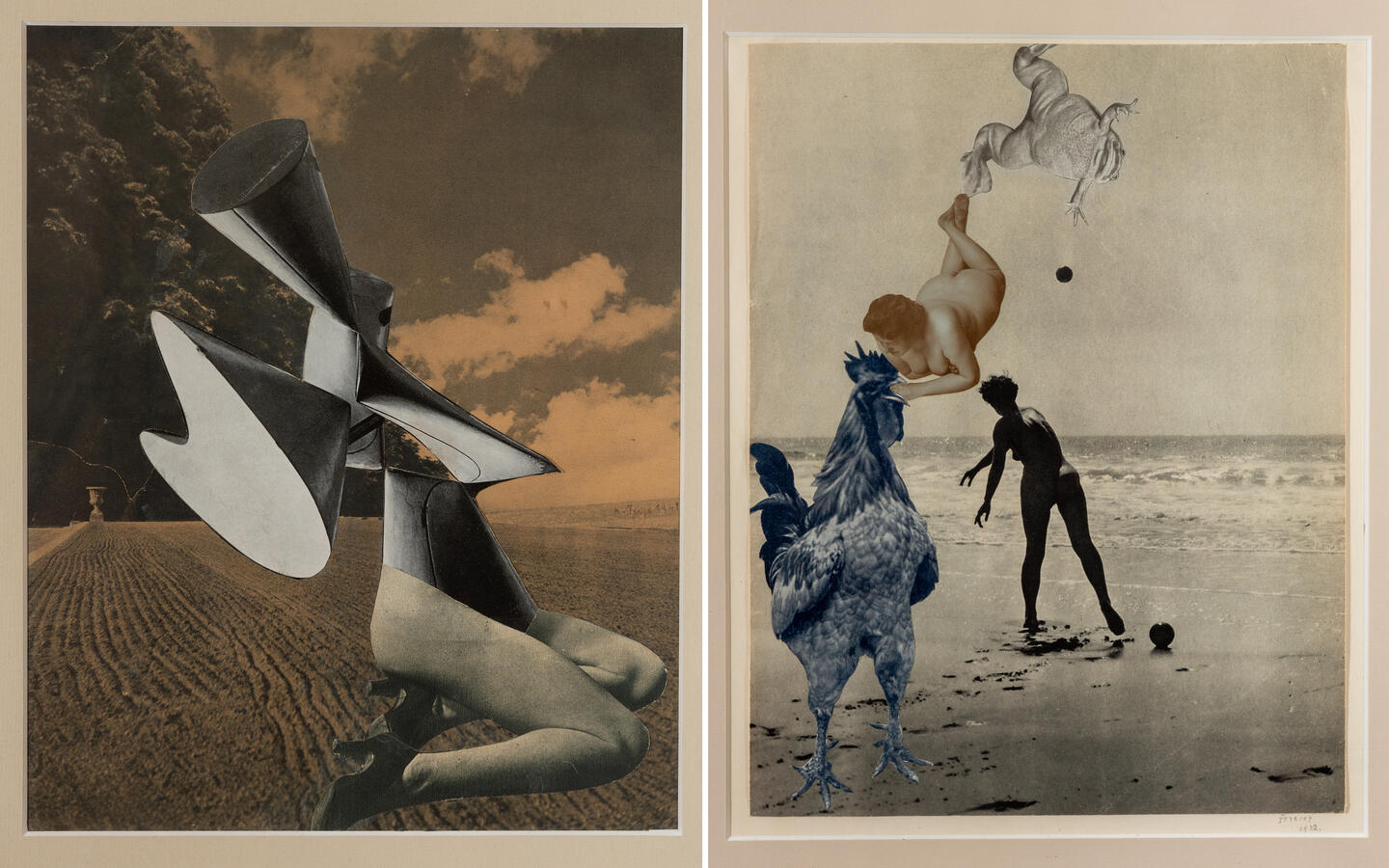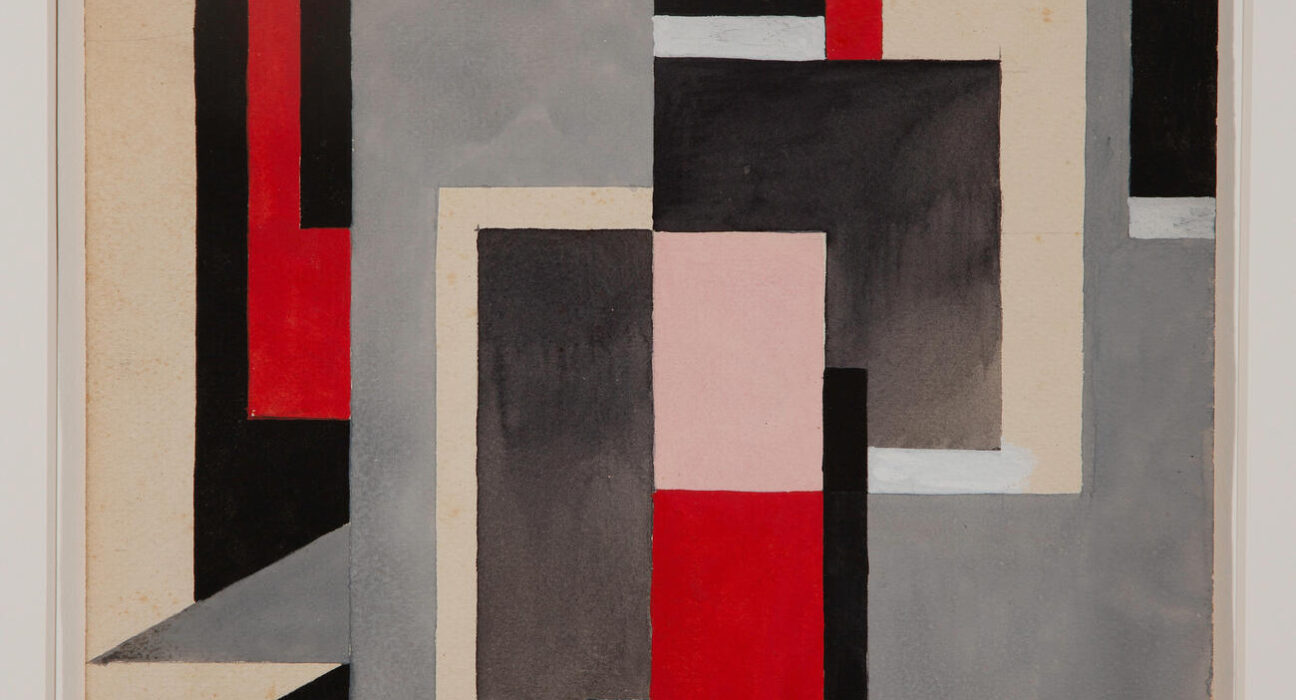The Johns Hopkins University Bloomberg Center will open the new Irene and Richard Frary Gallery in October with an exhibition of rare avant-garde works by artists throughout the European continent, including in Russia, Ukraine, and the Baltics, created during the social and cultural upheavals in Central and Eastern Europe between 1910 and 1941.
The free public exhibition—”Art and Graphic Design of the European Avant-Gardes”—will open Oct. 23 with rare books, prints, photographs, and ephemera from artists who defined some of the most influential artistic movements of the 20th century, including Futurism, Dadaism, Suprematism, Constructivism, and Surrealism.
The Frary Gallery’s inaugural exhibition at 555 Pennsylvania Ave. will feature 75 works from artists including El Lissitzky, Kazimir Malevich, Liubov Popova, Aleksandr Rodchenko, Lajos Kassák, Karel Teige, and Victor Brauner—many of which have never been on view in North America.
“We are deeply grateful to Irene and Richard Frary for their support of the Hopkins Bloomberg Center and their significant contribution to our mission to connect the worlds of research, and the arts,” said Cybele Bjorklund, executive director of the Hopkins Bloomberg Center. “Through its opening exhibition, programming, and future presentations, the Irene and Richard Frary Gallery will bring a fresh infusion of artistic expression and cultural dialogue to Pennsylvania Avenue. We invite our neighbors throughout the Washington community to discover the diverse array of free public events and concerts at the Hopkins Bloomberg Center.”
About the exhibition
Organized chronologically by artistic movement, the exhibition pairs abstract works across geographic boundaries, linguistic differences, and urban and periphery areas to demonstrate the interconnectedness of European avant-garde artists and the ways in which they engaged in an international exchange of ideas to develop new visual vocabularies in response to a world transformed by the modern post-war age.
The exhibition draws from the rarely seen private collection of art and literature assembled by Irene and Richard Frary and includes many recent gifts from the collection to the Johns Hopkins Sheridan Libraries. Highlights include photography and photomontage from avant-garde artists impacted by preceding art movements, as well as works from lesser-known avant-garde publishing cultures in Armenia, Georgia, Latvia, Lithuania, Romania, and the former Yugoslavia, including a large group of extremely rare avant-garde and modernist books in Yiddish and Hebrew.

Image caption: Left: Untitled, Prague, Karel Teige (1941); Right: Untitled, Prague, Jindřich Štyrský (1932)
Image credit: Bruce Schwarz
“The juxtaposition of art from across the continent allows viewers to uncover commonalities between each of the five ‘isms,’ painting a more complex picture of artistic movements previously defined by nationality and enabling a better understanding of a time marked by major political, social, and cultural transformations,” said exhibition curator Philipp Penka. “The Frarys’ remarkable collection offers a glimpse at one of the defining periods in European modernism. It makes visible a complex international network spanning from Paris and Berlin to the Baltics, the Caucasus, Czechoslovakia, Poland, Romania, the Soviet Union, and modern-day Ukraine, and reveals the avant-garde’s shared concern with uncovering the contradictions of an obsolete societal order, and to give shape to a more just and truthful society.”
The 1,000-square-foot gallery, designed by Rockwell Group, will present rotating exhibitions drawn from the university’s collections and special exhibitions in partnership with leading museums and collections. The gallery and inaugural exhibition design were overseen by Dan Kershaw, senior exhibition designer at the Metropolitan Museum of Art.
Inaugural exhibition highlights include:
- Liubov Popova’s 6 graviur L. Popovoi (1917), a suite of multi-color linocut prints;
- One of only five copies of UNOVIS (1920), an anthology published by artists in Vitebsk, Belarus, that includes several works on paper by El Lissitzky and Kazimir Malevich;
- Hungarian artist Lajos Kassák’s Bildarchitektur [Picture Architecture] (1925), a 1927 india ink drawing (Composition), and a very early woodcut (1921);
- One of three known copies of Aleksandr Rodchenko’s “Composition 73,” a color lithograph printed by the Weimar Bauhaus workshops for Adolf Behne, Der Sieg der Farbe (Berlin, 1924);
- An untitled Suprematist artist book by Ivan Puni (1920);
- Dutch artist Lou Loeber’s cardboard box object with multi-color geometrical gouache design in the manner of De Stijl (1920s);
- And three original photo collages by Crimean-born graphic artist, designer, and actor Petr Galadzhev.
“This inaugural exhibition of major works from the Frary Collections provides an unprecedented opportunity to explore a major artistic period in a new and innovative way,” said Daniel H. Weiss, Homewood Professor of the Humanities at Johns Hopkins University and president emeritus of the Metropolitan Museum of Art in New York. “Through its thoughtful and ambitious program, the Irene and Richard Frary Gallery attests to the vitality and importance of the arts at the Bloomberg Center and at Johns Hopkins.”
Added Richard Frary, a Class of 1969 Johns Hopkins alumnus, donor, and volunteer leader for over 40 years: “Irene and I are delighted to be a part of the first of many thought-provoking presentations at the Irene and Richard Frary Gallery that will inspire new conversations, ideas, and research through art. It is our hope that this exhibition, which cumulates a diversity of artistic and ideological perspectives, will advance the Hopkins Bloomberg Center’s mission to foster discovery, democracy, and global dialogue.”

